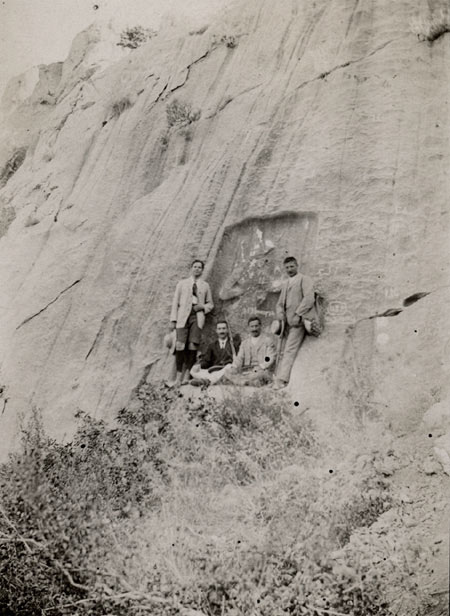 |
The location is a Hittite wall carving in a pass within Mount Nif.
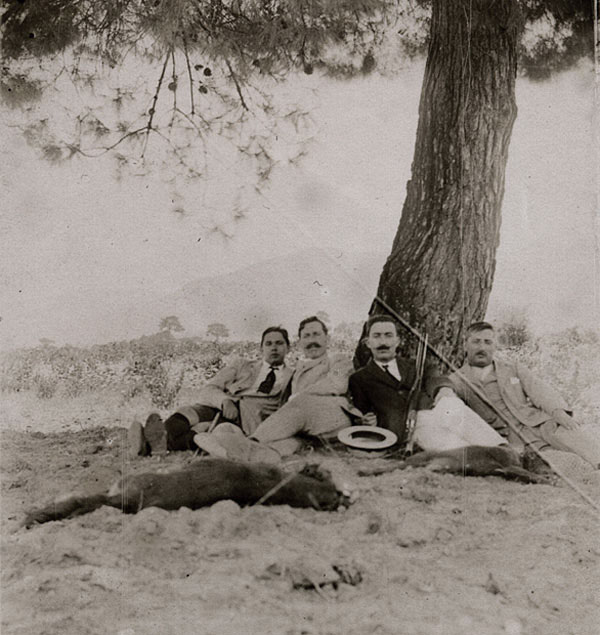 |
The hunting party with their quarry - youthful grandfather (Josef Murat) on the far left.
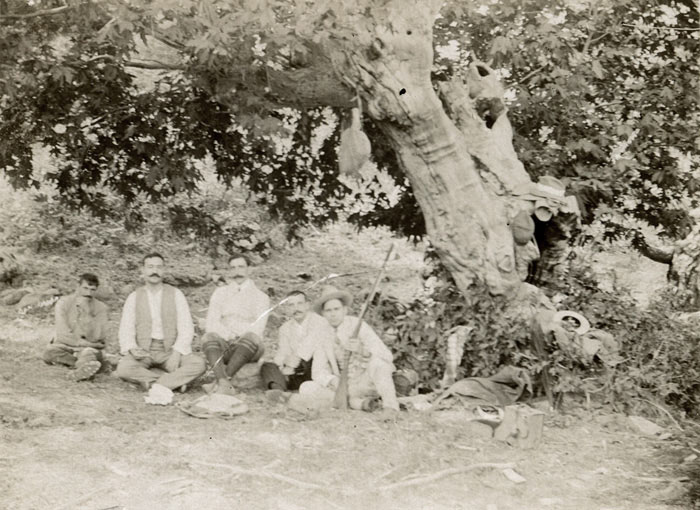 |
Unfortunately cannot recognize any individual here.
 |
Dr. Jean Murat, c.1905.
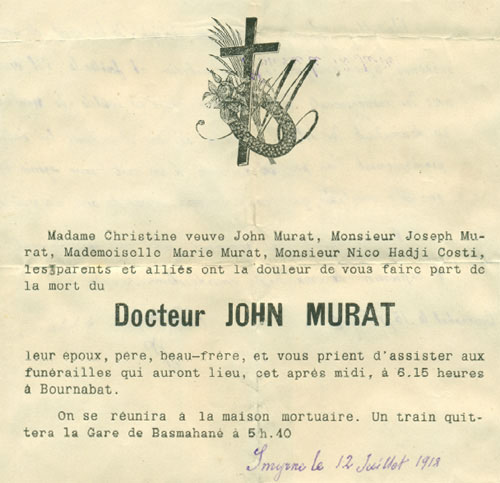 |
The funeral notice of Jean Murat who died in 1918.
 |
Joseph Murat with colleagues in Vienna in 1918. Josef spoke German and was working /training as an auditor in banking in that city (information derived from the German inscription on the back of the photo).
 |
My grandfather Josef (b. in Bornabat 4th February 1894) on the left with is poorly younger brother Kimon (b?), who died of an illness in 1916 in Bornabat (shortly before his father Dr. Jean Murat later the same year). I have a copy of the letter regarding his funeral in Bournabat.
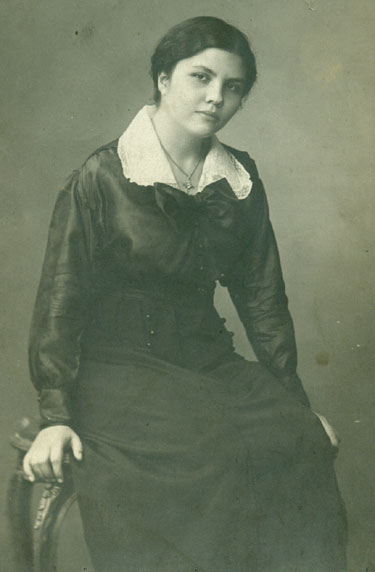 |
My great aunt Maria Murat (b. in Bournabat 29th May 1899, d. Trieste 27th November 1955), which must have been taken before 1922. She is the recipient of the letter from Albert Murat in Beirut.
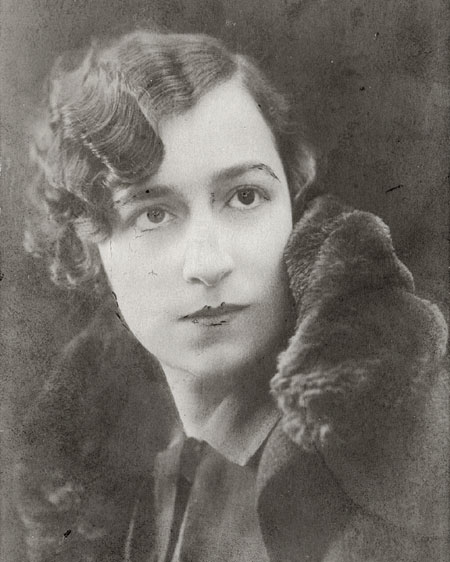 |
A rather glamorous photo of my Triestine Grandmother Erminia Murat (nee Saletnik, born in Trieste 3rd June 1899) who was only four days older than her sister in law Maria.
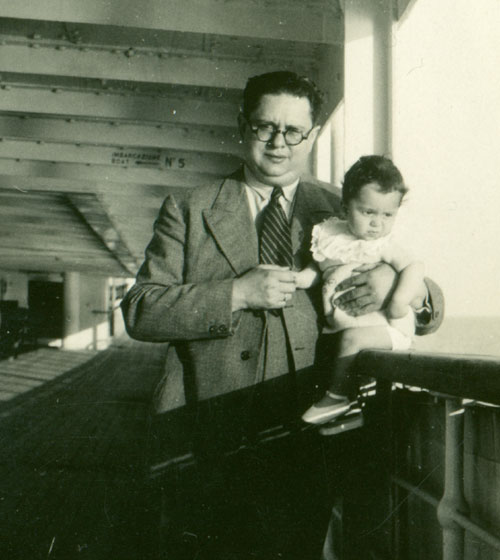 |
My father George as a child and grandfather Josef on a ship.
 |
Ermina at home with her sons Nick and George in front of the Trieste house c.1935.
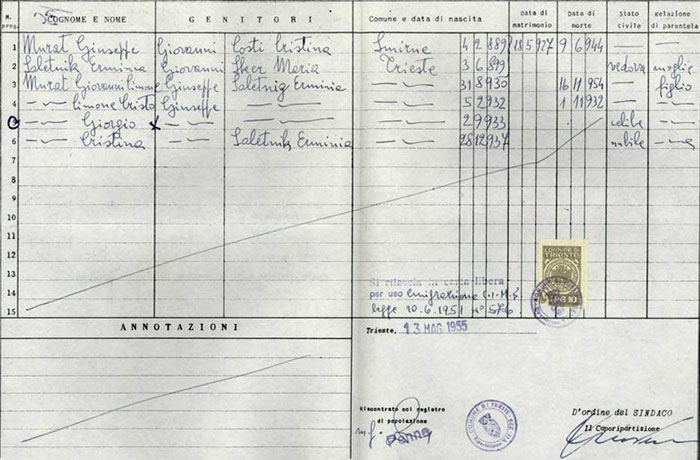 |
An Italian document shows the family as of 1955 in Trieste although for some reason Maria is not listed; she died later that year.
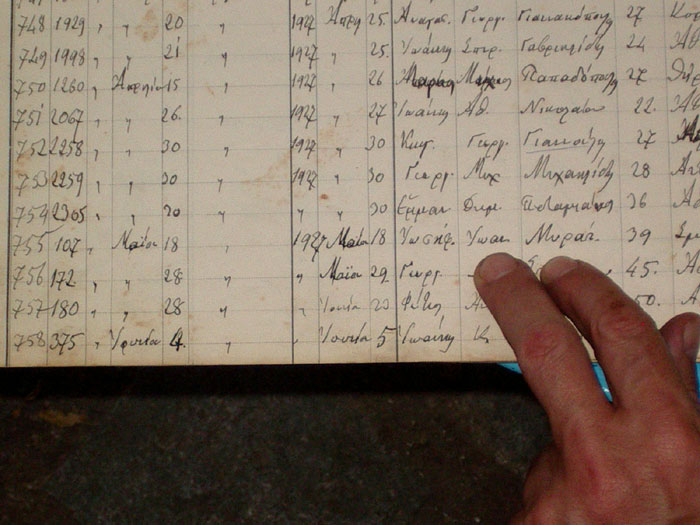 |
The 1927 marriage registry entry for Josif Murat in the Agia Nicolas Greek Orthodox Church registers.
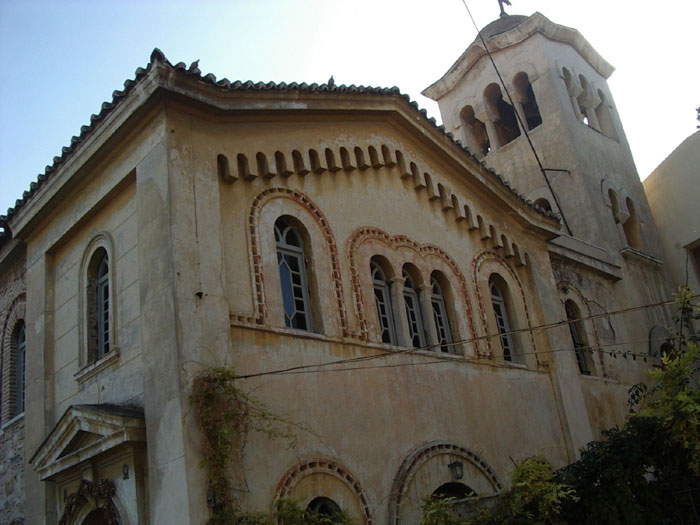 |
The Agia Nicolas Orthodox Church in Athens, Greece I visited with family in 2008. My grandparents Josif and Erminia got married here, travelling from Trieste where there was also an Orthodox Church (San Nicolo), perhaps to allow relatives based in Athens to attend. Cristina, Josef’s mother had been dead two years.
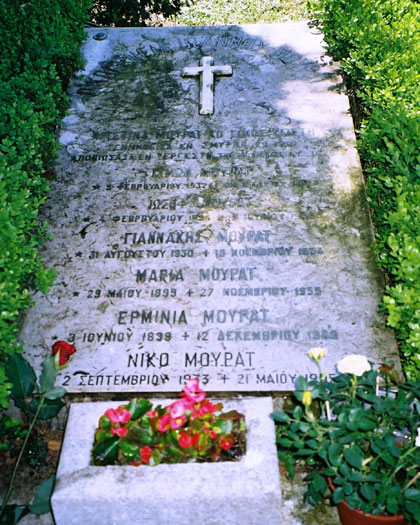 |
The Murat family tomb in the Orthodox cemetery of Trieste.
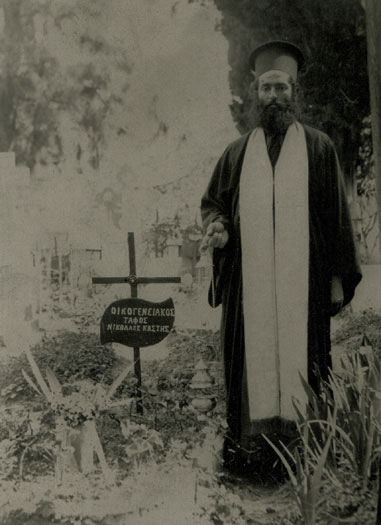 |
The photo shows a Greek Orthodox priest standing next to the family tomb of the Nikolaos Kostis family - ie the family of Jean Murat’s Greek wife. The Kostis or Chatzi Kostis family originated in Thessaly, but had connections with Smyrna, Trieste and other Mediterranean trading centres from at least the late 18th century onwards. The inscription simply reads “Family tomb of Nikolaos Kostis.” The priest has clearly just finished performing a memorial service - hence the censer in his hand. Records show the Kostis family tomb was in the Greek cemetery of Bornova and the photo suggests it was a simple village cemetery rather than the more grandiose municipal cemetery in Smyrna.
It seems that when Dr Jean Murat married the Orthodox Christina Kostis, he undertook to raise his children in their mother’s faith. He may have remained a Catholic himself though. Mixed marriages like that were not unknown, especially in Smyrna families - research and information courtesy of George Vassiadis, 2012
It seems that when Dr Jean Murat married the Orthodox Christina Kostis, he undertook to raise his children in their mother’s faith. He may have remained a Catholic himself though. Mixed marriages like that were not unknown, especially in Smyrna families - research and information courtesy of George Vassiadis, 2012